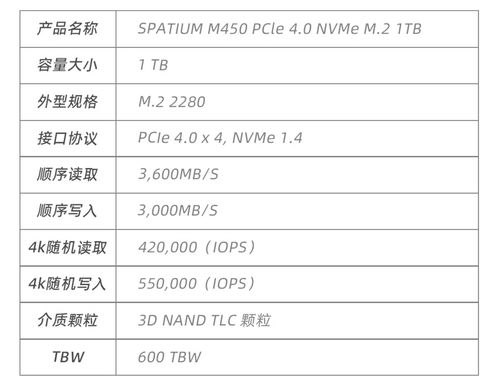What is TBW? The Hidden Truth About M.2 SSD Lifespan
When you’re shopping for an M.2 solid-state drive, have you ever noticed a parameter called TBW? This seemingly alien acronym actually stands for “Total Bytes Written.” Today, let’s delve into what TBW can tell us and what points are worth discussing.
What is TBW? The User Manual for Hard Drive Lifespan
In simple terms, TBW is a metric used by manufacturers to measure the lifespan of an SSD, indicating the total amount of data that can be safely written to the drive throughout its designed lifecycle. If this value is exceeded, your SSD might start to falter. However, it’s essentially a conservative estimate since manufacturers want to ensure their warranty policies don’t lead to significant losses.
For instance, if your SSD has a TBW rating of 240TB, that means it can safely write at least 240TB of data. Even with heavy usage, as long as you stay within this limit, the drive shouldn’t show any signs of failure.

What Does 240TBW Mean?
Let’s look at this seemingly large number from a different angle—calculating its “remaining lifespan” in days:
-
If you are a tech enthusiast who “works overtime coding and also enjoys video editing,” writing 50GB of data daily (that’s quite a lot!):
- Here’s the math:
\[ 240TB \div 50GB/day = 4,800 \text{ days} \approx 13 \text{ years} \] - This means your SSD could last at least 13 years! Keep in mind that after 13 years, technology will have significantly advanced, and your SSD might still be here “living on borrowed time.”
- Here’s the math:
-
If you’re an average user, writing about 10GB of data daily (perhaps streaming shows, installing software, and browsing the web):
- \[ 240TB \div 10GB/day = 24,000 \text{ days} \approx 65 \text{ years} \]
- 65 years?! Congratulations, this SSD could last you a lifetime; it might even become a family heirloom.
-
However, if you are a database administrator with intense write operations, 240TBW might not last you several years. Thus, it’s crucial to “use the right drive for the right purpose.”
The Significance of TBW: A Mix of Education and Critique
Understanding TBW is beneficial, but should it be our primary focus? Let’s analyze from several perspectives:
-
Write Amplification:
- SSDs can exhibit a “compulsive behavior”: the total data written may exceed what you request. This is due to garbage collection mechanisms and data management causing it to “work overtime.” It’s like asking you to wash one piece of clothing but handing you a pile of socks instead—frustrating, right?
-
Usage Scenarios Determine Lifespan:
- Regular users: Writing the occasional PPT or watching shows, you likely won’t need to worry about TBW; your drive might fail before you even come close to using it up.
- High-load scenarios: For databases and video editing, don’t expect a low TBW SSD to hold up—the more you write, the faster it ages.
-
Controller Chip and Flash Type:
- The lifespan of an SSD also hinges on its “constitution.” Different types of flash memory have varying durability, for example:
- SLC (Single-Level Cell): Durable like an Ironman competitor.
- QLC (Quad-Level Cell): Fragile like a paper boat.
- The lifespan of an SSD also hinges on its “constitution.” Different types of flash memory have varying durability, for example:
Finally, What Else Can We Critique?
TBW is a scientific and rigorous metric, but it can sometimes intimidate novice users. In reality, for most average people, this number isn’t something to obsess over—your SSD will most likely outlast your home Wi-Fi router.
To be honest, technology will have evolved dramatically in 13 years. By then, you might be using photonic drives or quantum storage while your SSD quietly reminisces about the past in a nostalgic “museum.”
Conclusion
- What is TBW? It’s a total write lifespan indicator for SSDs, indicating the total amount of data that can be written to the drive.
- What does 240TBW mean? Ordinary users are unlikely to exhaust it, while users with high write demands need to take more care.
- Is it worth paying attention to? Just a quick glance while buying is sufficient; more importantly, performance, capacity, and price are the key factors!
When it comes to hard drives, choosing one that suits your needs is enough; there’s no need to overthink it. After all, the purpose of a hard drive is to accompany your data on its journey while our mission is to enjoy the convenience brought by technology. If the drive wears out, you can always replace it! 😄
